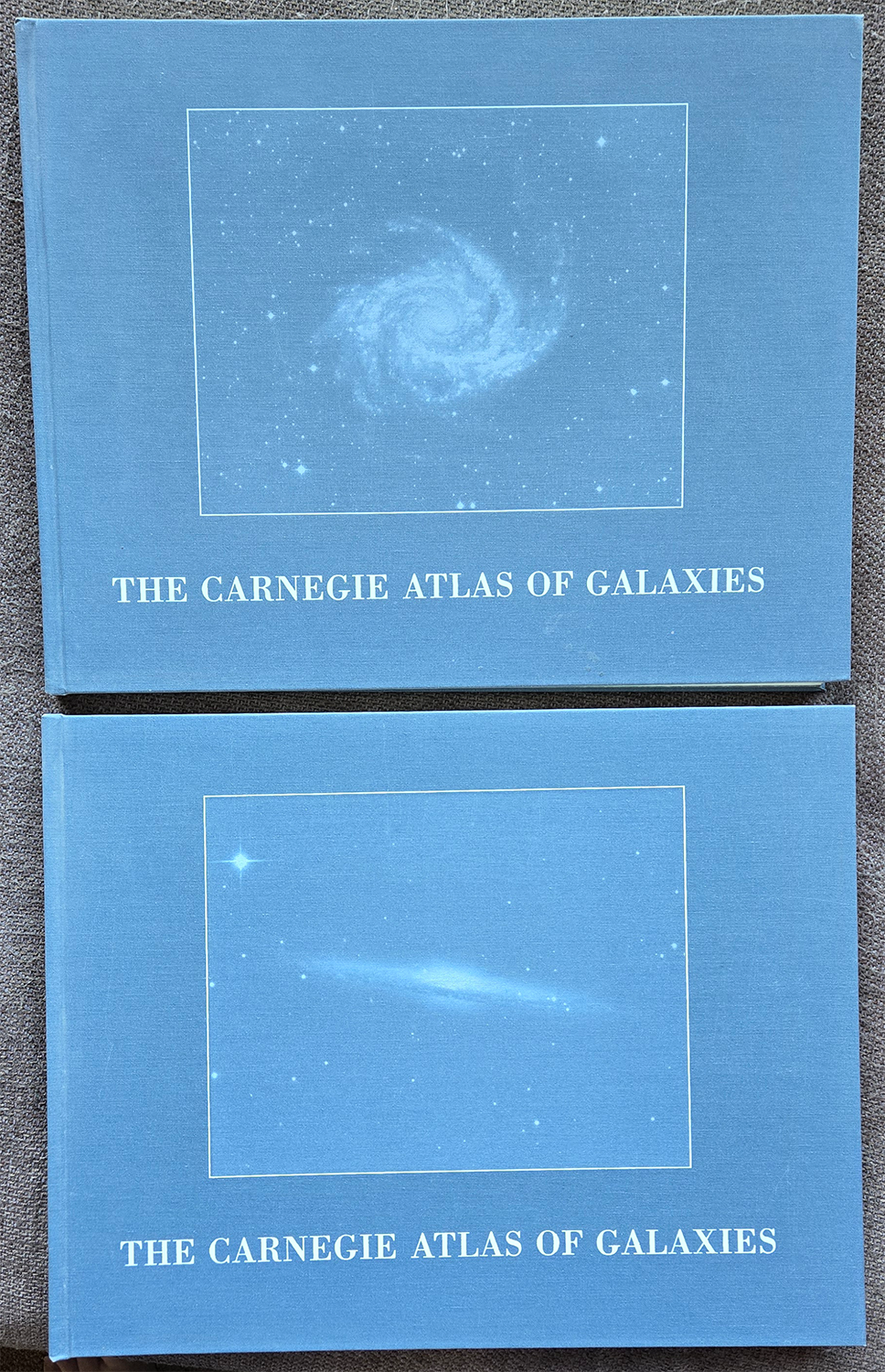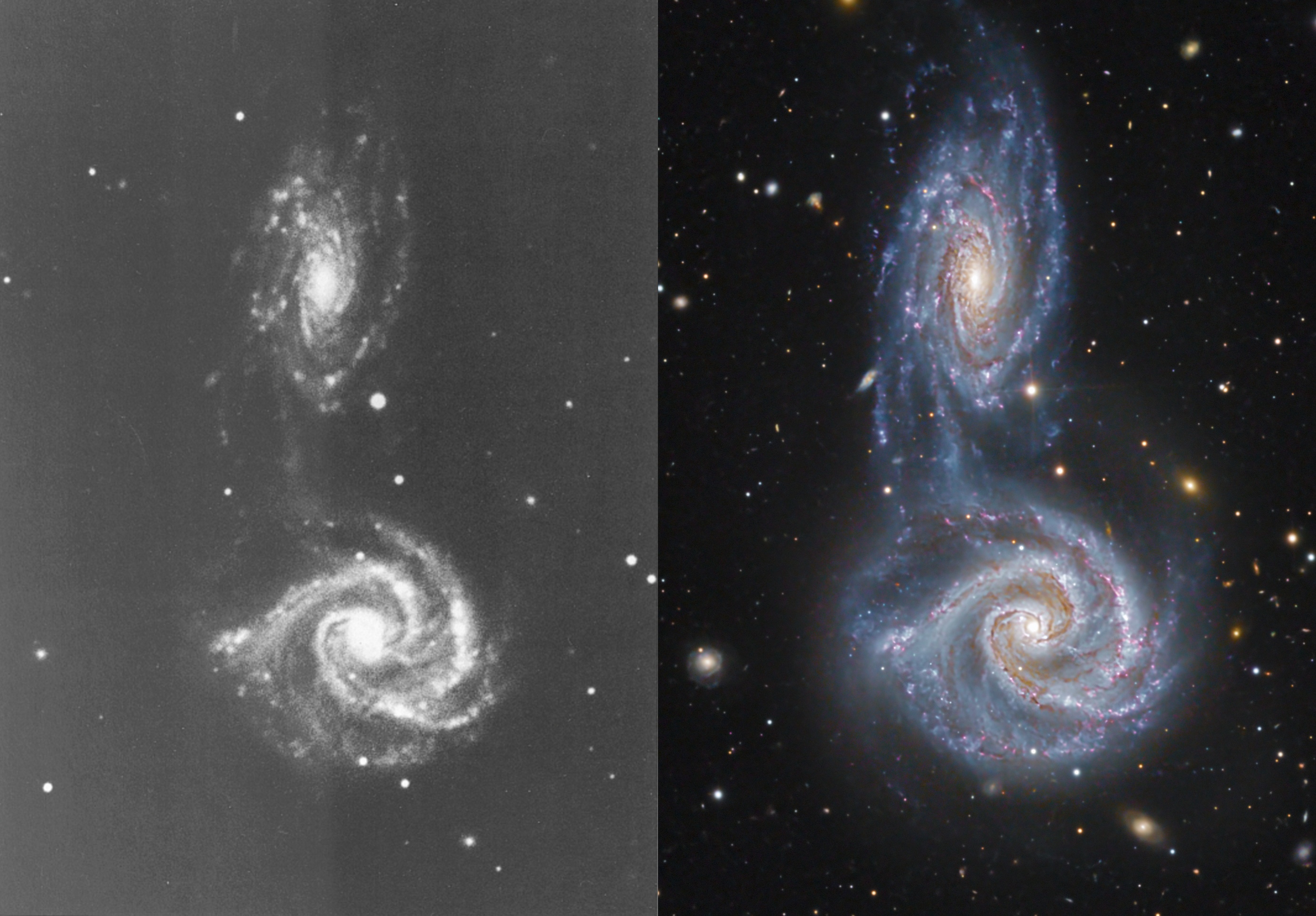
You can find this atlas on line here: https://publicationsonline.carnegiescience.edu/publications_online/galaxy_atlas_1/default.html and here: https://publicationsonline.carnegiescience.edu/publications_online/galaxy_atlas_2/default.html. They aren't easy to copy but you can look through the plates fairly easily.
The images in these books provide a look back in time at the leading edge technology that Edwin Hubble and others had available in June, 1949 when Hubble published a paper in the Astronomical Society of the Pacific showing the first images from the 200" Hale telescope. Remember that back then, images were made using photographic plates. The plates were often cooled and specially treated to reduce reciprocity failure (i.e. nonlinearity) and to increase sensitivity. Each image was taken with a single exposure. I think that many of us take for granted that we can buy a relatively inexpensive cooled digital camera that is FAR more sensitive than what Hubble used on the 200" scope. With modern digital processing, backyard amateurs can easily calibrate their data, stack up exposures of tens and even hundreds of hours, and produce images with small telescopes that astronomers even in the 1970s and 80's could only dream about!
The comparison below shows the difference using Arp 271 as an example. The atlas image on the left was taken with the 200" (5-m) Hale telescope using film and a single 40 minute exposure. You can see that the level of noise due to photon noise and film grain is pretty high. The matching scale image on the right was taken with my 24" telescope using a modern, cooled CMOS camera. The complete LRGB data set was captured in 32 h 50m and processed digitally. This is a very clear demonstration that relatively small amateur telescopes are capable of taking images that far exceed what could be done just 40-50 years ago. It is even difficult to distinguish between some of the small background galaxies and the stars in the 200" image. It took a while to develop high sensitivity, high resolution solid state sensors but it's obvious why they very quickly replaced film for virtually every form of imaging.

These atlas's are full of other striking examples like this one . Regardless, I'm really enjoying looking at was was done with these legendary telescopes before the age of digital sensors. It's not hard to think back to a time when it was almost inconceivable that telescopes could be made larger than the 200"...and now a 5-m telescope is almost considered to be a "garden-variety" instrument!
During my early career, I was very lucky as a grad student to be around as Roger Angel worked on spin casting his first mirror and developing the warped lap figuring technology that were two critical technologies that would enable the production of his pioneering 8-m mirrors at the Large Mirror Laboratory (that he later founded at the University of Arizona.) That was the genesis of the next generation of large telescope technology now incorporated into so many new observatories in Chile and elsewhere around the world. It is also pretty cool that the dynamic interferometers that we invented and produced at 4D Technology were critical to making these mirrors as well. Our interferometers were used to test all of the mirrors made and delivered by the Mirror Lab...but that's another story.
John